#New York New Haven & Hartford
Explore tagged Tumblr posts
Note
Vent to me about trains if ya like :3
YAY :D
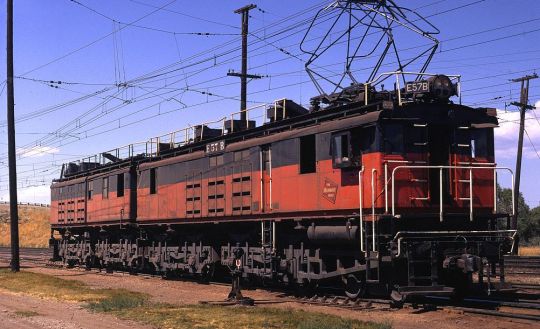
So the Milwaukee Road was the First Railroad to use the use 3000 Volt DC power for any significant stretches of Electrification in 1915 (it was adopted by South African Railways in 1925, Cleveland Union Terminal (under the New York Central Railroad), the Soviet Union in 1930, the Delaware Lackawanna and Western Railroad in 1930, Italy in 1933, Brazil in 1935, Spain and Chile in 1945)
however the Primary mainline Electrification system United States would be 11,000 Volts 25 Hertz AC which was Adopted by the New York New Haven and Hartford Railroad in 1907 between Pelham and Stamford in New York (later all the way between Manhattan and New Haven CT), the Pennsylvania in 1915 between Philadelphia and Paoli (later the Entire PRR mainline between Washington DC and New York as well the entire Philadelphia Suburban Network), the Great Northern railroad in 1922 between Wenatchee and Skykomish (de-electrified in 1956), the Virginian Railroad in 1925 between Mullens and Roanoke (de-electrified in 1962), the Reading Railroad in 1928 for their Half of the Philadelphia Suburban Network, and very Briefly the Norfolk and Western had Electrified the Elkhorn grade with this system but de-electrified in 1940
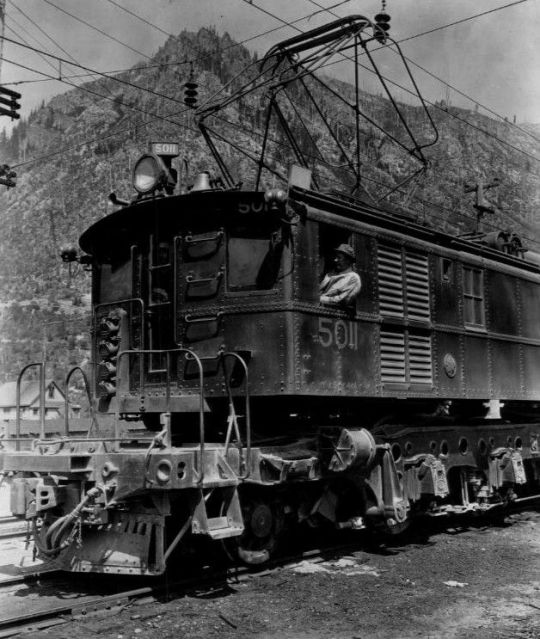

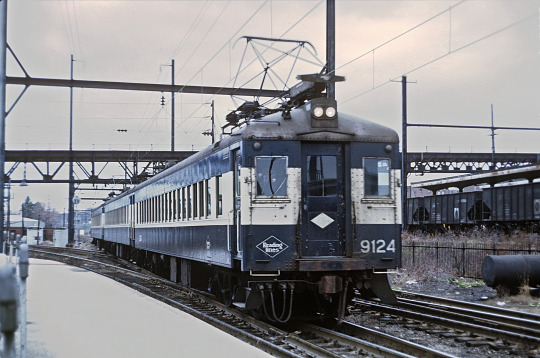

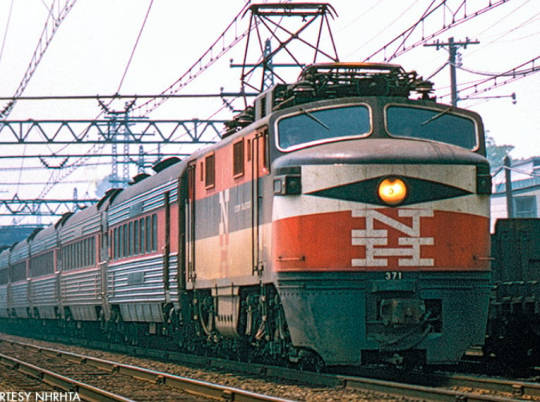
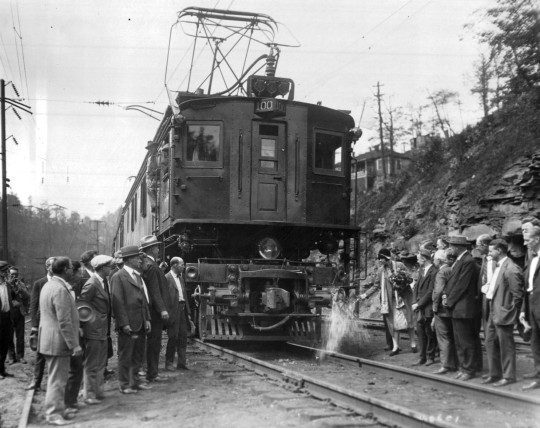
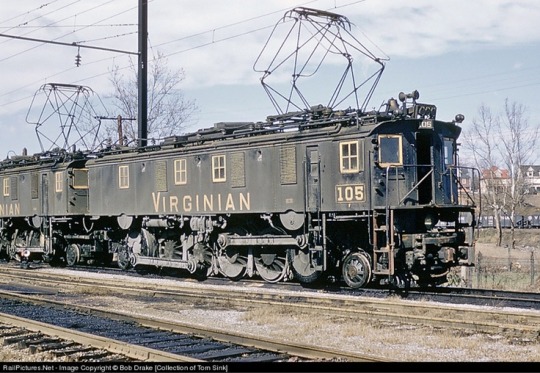
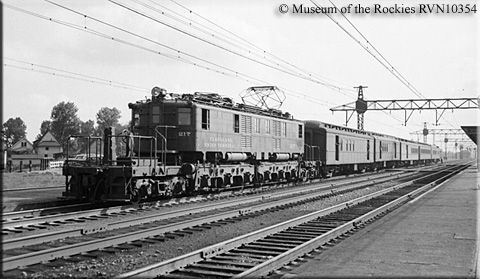
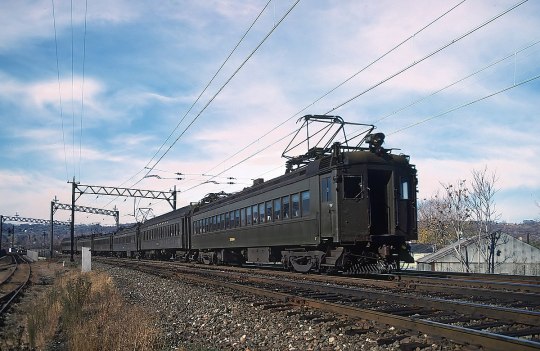
@amtrak-official
#trainposting#amtrak#electric traction#pennsylvania railroad#new york central#new york new haven and Hartford Railroad#new haven#penn Central#conrail#reading railroad#reading and Northern#Virginian Railroad#electrification#electrified railroads#great northern#septa regional rail#philadelphia#northeast corridor#Delaware Lackawanna and Western#Erie Lackawanna#Cleveland Union Terminal
17 notes
·
View notes
Text
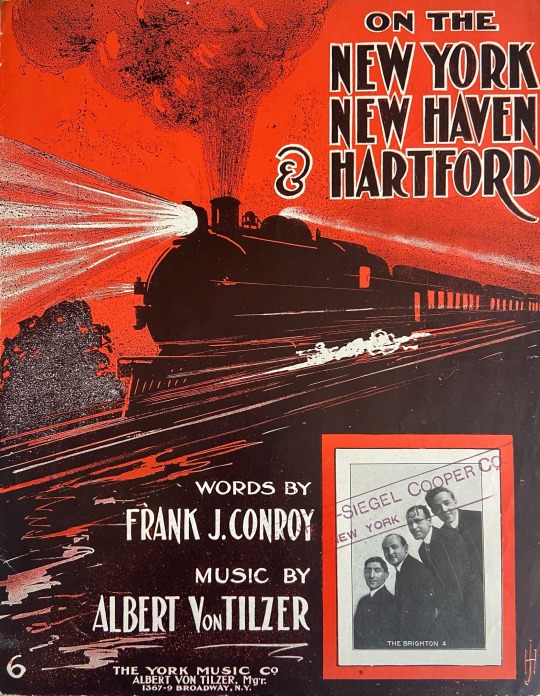
#new york new haven & hartford#nynh&h#history#railroad#1910s art#1910s#sheet music#steam locomotive#voca1ion
2 notes
·
View notes
Photo
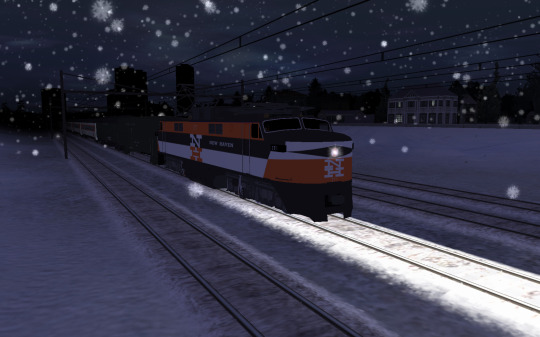
Day 24: New Haven EP-5
Info from Wikipedia
The New Haven EP-5 was a double-ended mercury arc rectifier electric locomotive built in 1955 by General Electric, for the New York, New Haven and Hartford Railroad. It was built to haul passenger trains between Grand Central Terminal or Penn Station in New York City and New Haven, Connecticut. The EP-5s resembled the Alco FA.
The EP-5s were the first AC passenger electric locomotives to use rectifiers to convert alternating current from overhead wires to direct current for the traction motors. They also collected DC from the third rail used by the New York Central, whose tracks the New Haven used to reach Grand Central Terminal. All of the class were equipped with the Pennsylvania Railroad's cab signal system needed to operate into Penn Station; Washington, D.C.-Boston through trains over the Hell Gate Bridge, plus the Montrealer/Washingtonian, were their main assignment throughout their New Haven careers.
The units were known as "Jets" due to the roaring sound made by their main blowers; an example of this characteristic was inadvertently preserved for posterity in a scene shot at Grand Central Terminal, the very first moments of the movie The Man in the Gray Flannel Suit.
The EP-5s had a reputation for rapid acceleration and high pulling capacity. However, the class also had a tendency to overheat and catch fire due to the crowded, poorly ventilated internal component arrangement, a situation made necessary by the need for the units to conform to the weight restrictions imposed by the New York Central's Park Avenue steel viaduct. This problem was significantly aggravated by the New Haven management's de-emphasis of electric operations in favor of its new dual-power FL9 diesels, and the railroad's financial condition. By 1962, a year after the New Haven entered bankruptcy, only three units were in service. All 10 were quickly rebuilt under the trustees' management, but by the time of the New Haven's 1969 inclusion in Penn Central, four were again out of service (and were soon scrapped). The EP-5s were rapidly replaced on Washington–Boston trains by the reliable former Pennsylvania Railroad GG1 electrics.
When the New Haven was merged into PC, the six units still in service were redesignated as the E-40 class, and were assigned to commuter train service between Grand Central Terminal and New Haven. The E-40s continued in this service, steadily dwindling in number, until May 1973 when the Metropolitan Transportation Authority suddenly banned them after #4971 caught fire in the Park Avenue Tunnel; all went into dead storage. Amtrak passed them up for new electrics. Two of the units, #4973 and #4977, were rebuilt by PC into freight units, stripped of their third-rail capability, steam generators, and one of the two pantographs. They were used in a variety of light-duty freight services, but their utility was limited by their lack of multiple-unit capability and dynamic brakes. Within a year of Penn Central's inclusion into Conrail, the remaining two E-40s were retired. All were scrapped by 1979.
models and route by: Pweiser, Auran, and Download Station
#New Haven#New York New Haven & Hartford Railroad#New York New Haven & Hartford#New Haven Railroad#NH#EP-5#New Haven EP-5#Electric Locomotive#Trains#Trainz Simulator#Advent Calendar#Christmas#Christmas 2022 🎄🎅🎁
4 notes
·
View notes
Text

I made Eras Tour bracelets of all the times Taylor Swift references trains in her songs. The colours are inspired by different trains and railway liveries. Excessive details under the cut:
"You know that my train could take you home" from Willow. Inspired by Great Western Railway's Intercity Express Trains. It's the train I catch most often, it's my train!
"I knew you, stepping on the last train" from Cardigan. Inspired by the subway cars in New York City, which I think of as having blue seats but it seems yellow/orange is just as (or more?) common. Idk I've never been to New York, my whole knowledge of the subway comes from Broad City and pictures of dogs in Ikea bags.
"I jump from the train, I ride off alone" from The Archer. Inspired by ye olde American locomotives like the Union Pacific No. 119. This lyric evokes Wild West imagery for me and this type of engine is what my British brain thinks of as a "cowboy train".
"Rebekah rode up on the afternoon train" from The Last Great American Dynasty. Inspired by the steam locomotives used in the 1940s by the New York, New Haven, and Hartford Railroad, which is what Rebekah Harkness would have rode up on. Sadly I couldn't find a good colour image of one, so I leaned into it and chose a greyscale colour palette. As it happens the engines were almost certainly black anyway so it's fine.
"Silence, the train runs off its tracks" from Sad Beautiful Tragic. Inspired by my boy Thomas the Tank Engine. There are a lot of derailments on the Island of Sodor, the Fat Controller should probably have been sacked.
"Northbound I got carried away, as you boarded your train south" from I Look in People's Windows. Inspired by the London Underground map. I didn't have any brown beads so the Bakerloo line has been reassigned orange.
"We wait for trains that just aren't coming" from New Romantics. Inspired by the British Rail Class 195 trains created for Arriva Rail North, the network so incompetent that even the Tories had to re-nationalise it. Those trains just weren't coming.
"You took the night train for a reason" from Champagne Problems. Inspired by the British Rail Mark 5 coaches used on the Caledonian Sleeper Service.
"Some trains you can't catch again, you've gotta leave it as it was" from Tim McGraw - Acoustic Demo. This is a deep cut that I expect even a lot of Swifties wouldn't necessarily know, but I've always loved this lyric. It totally recontextualises the song and ironically is a much more adult sentiment than the lyrics of the final recording. Inspired by the livery of Anglia Railways, which are the trains of my childhood. Anglia Railways has been sold and rebranded several times since then, so they are quite literally the trains I can't catch again.
I imagine that Taylor Swift has not been on a train in many years, for obvious reasons. However I appreciate her continued use of train imagery in her songs and I hope she never ever stops :)
#is this the most autistic thing i've ever done?#idk but it's certainly up there#this is a long post that nobody will read#but i had fun putting it together so it's fine
47 notes
·
View notes
Text

New York, New Haven, and Hartford Railroad, Library of Congress
31 notes
·
View notes
Note
:3
Trains :3

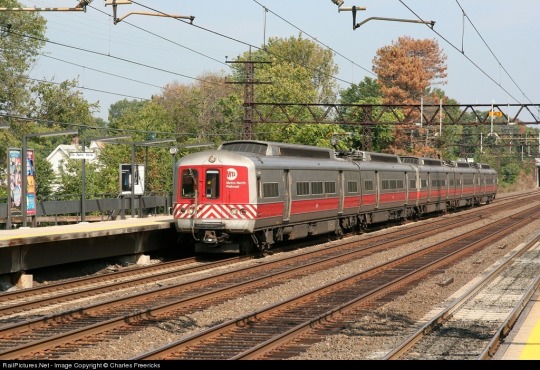

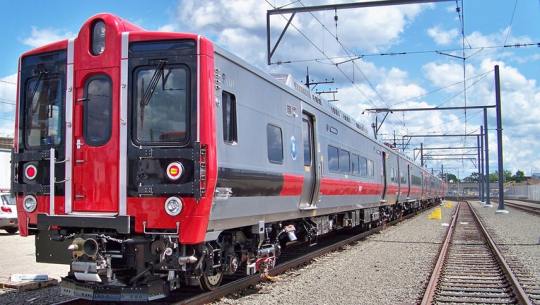

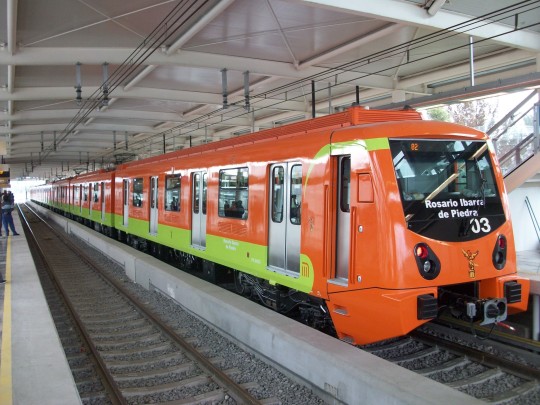
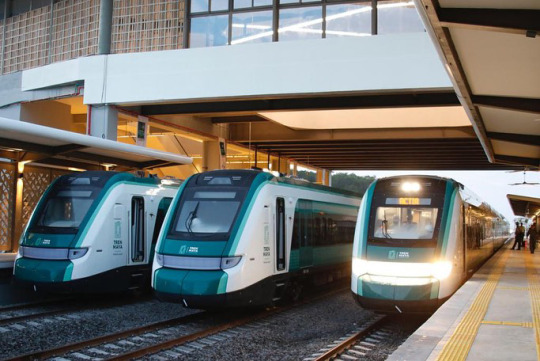
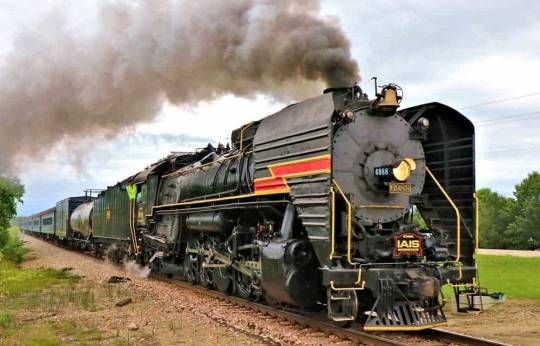
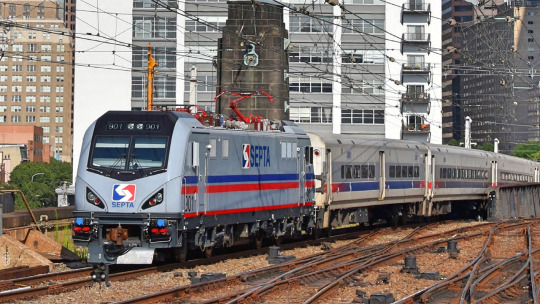
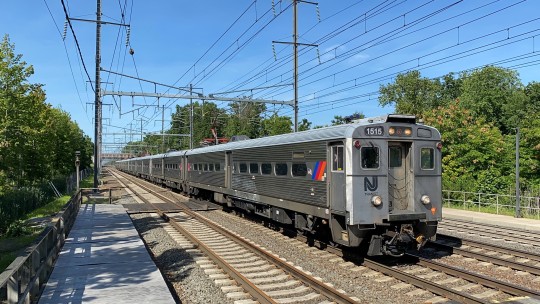
(these are all North America mostly the US and Mexico but a little bit of Canadian)
Neat
#trainposting#amtrak#electric traction#new york new haven and hartford#mta metro north#metro north railroad#nj transit#ttc subway#septa regional rail#tren maya#mexico city metro#commuter rail#commuter train
61 notes
·
View notes
Text
as an Indian who moved to the U.S. as an adult for the first time 2 yrs ago and has lived in connecticut for all that time I WILL be a patriot idgaf I simply do not understand the connecticut bashing....I don't even understand the new jersey bashing I am sorry to say....very convenient to reduce connecticut to rich white new york day time commuters who have estates in Lyme when this is a diverse working class state that is struggling with some of the worst wealth and income inequalites and underfunded public systems out there....!!! buses were free during covid and ct organizers made it so that free buses extended through winter and my first semester here I was just hopping on free ct buses, which are always warm when it's so cold outside .... ppl are friendly and even when they're not they will help you out if they see you in trouble.... the tree cover is fantastic... fuck CT bashers. New Haven public library I love you CTrail Hartford line I love you Bridgeport city council ceasefire resolution i love you Mystic aquarium i love you Uconn huskies women's basketball team i love you Yale and new haven divest movement I love you Uconn divest movement I love you Wesleyan divest movement I love you Uconn divest movement logo which has Jonathan the husky in a keffiyeh I love you
30 notes
·
View notes
Text
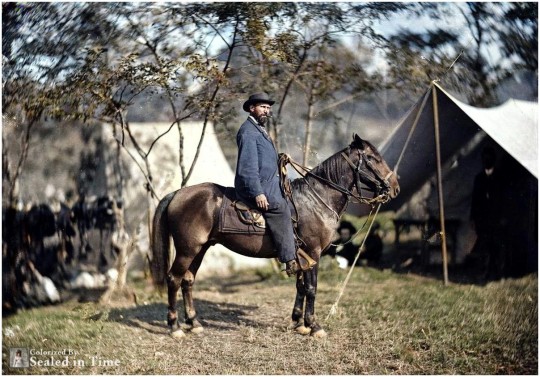
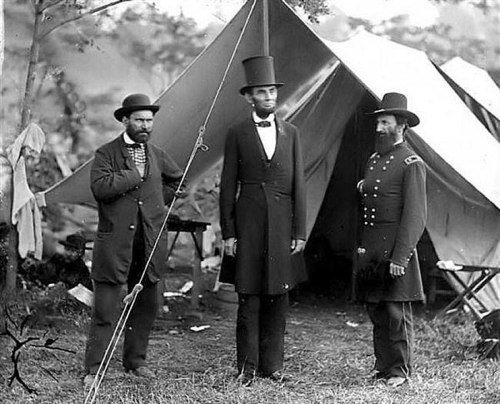
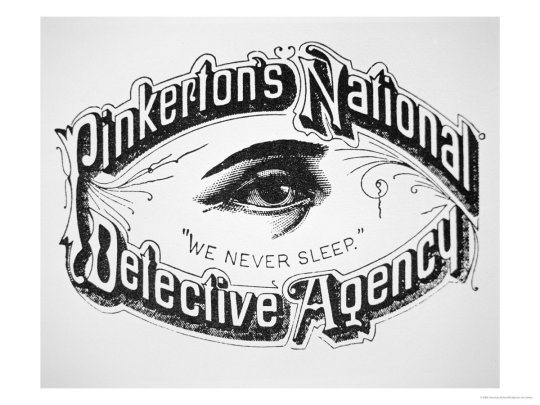

On July 1st 1884 Allan Pinkerton, the Scottish-born detective, died.
Not all Scots that I post about should be looked upon as good people, we do have to acknowledge this in our history, scratch beneath the subject in most cases and you will find fault, this is certainly true of Pinkerton.
Born in Glasgow, on the 25th of August 1819 his father was a sergeant of the Glasgow municipal police and died in 1828 of injuries received from a prisoner in his custody.
In 1842 Allan emigrated to Chicago, Illinois, before moving to Dundee, Kane County, Illinois, where he established a cooperage business. Here he ran down a gang of counterfeiters, and he was appointed a Deputy Sheriff of Kane County in 1846 and immediately afterwards of Cook County, with headquarters in Chicago.
In Chicago he organized a force of detectives to capture thieves who were stealing railway property, and this organization developed in 1852 into Pinkerton’s National Detective Agency, of which he took sole charge in 1853. He was especially successful in capturing thieves who stole large amounts from express companies. In 1866 his agency captured the principals in the theft of $700,000 from Adams Express Company safes on a train of the New York, New Haven & Hartford Railway, and recovered all but $12,000 of the stolen money.
In February 1861 Pinkerton found evidence of a plot to assassinate President-elect Abraham Lincoln upon his arrival in Baltimore on his way to Washington; as a result, Lincoln passed through Baltimore at an early hour in the morning without stopping. In April 1861 Pinkerton, on the suggestion of General George B. McClellan, organized a system of obtaining military information in the Southern states. From this system he developed the US Secret Service, of which he was in charge throughout the war, under the assumed name of Major E. J. Allen.
Pinkerton was not without controversy, one of his detectives, James McParlan, in 1873-76 lived among the Molly Maguires in Pennsylvania and secured evidence which led to the breaking up of what was considered a criminal organization. His detectives were also used to escort strike breakers during the era.
In 1869 Pinkerton suffered a partial stroke of paralysis, and thereafter the management of the detective agency devolved chiefly upon his sons, William Allan and Robert. He died in Chicago on the 1st of July 1884. He published The Molly Maguires and the Detectives , The Spy of the Rebellion, in which he gave his version of President-elect Lincoln’s journey to Washington; and a memoir, Thirty Years a Detective. The Pinkerton National Detective Agency continues to trade in the US to this day.
Pics are of Pinkerton, on horseback then with, President Abraham Lincoln, and Major General John Alexander McClernand. Pinkerton was the head of Union Intelligence Services at the time. He also, allegedly, foiled an assassination attempt against Lincoln. His wartime work was critical in Pinkerton’s development, which he later used to pioneer his agency. Other pics include the firms logo old and new.
14 notes
·
View notes
Text


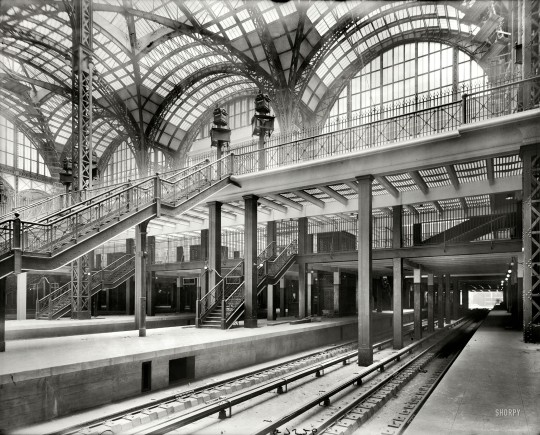




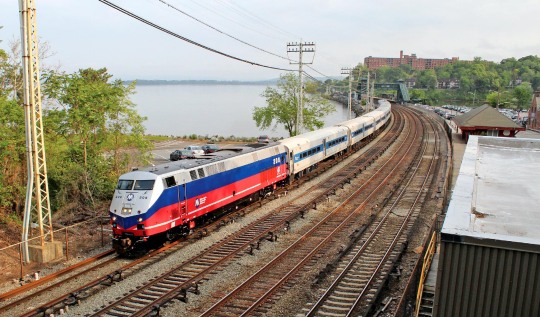
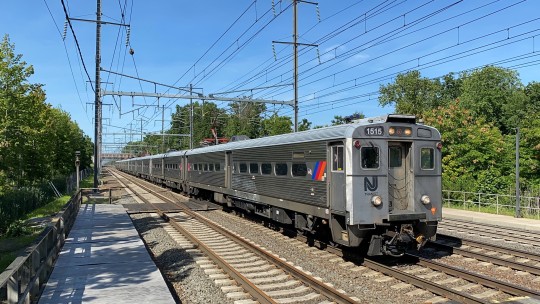

#trainposting#amtrak#electric traction#new york penn#penn station#pennsylvania railroad#new haven#new York new Haven and Hartford Railroad#new york central#mta metro north#metro north railroad#nj transit
4 notes
·
View notes
Note
I leik trainz :3
Also here are more
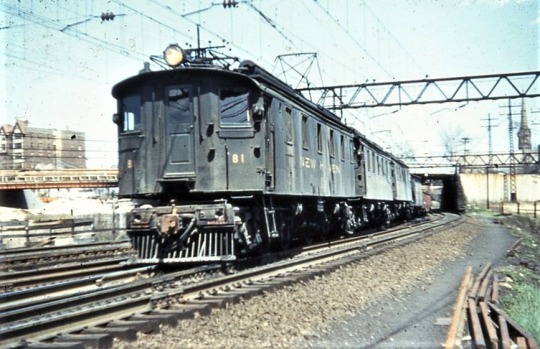

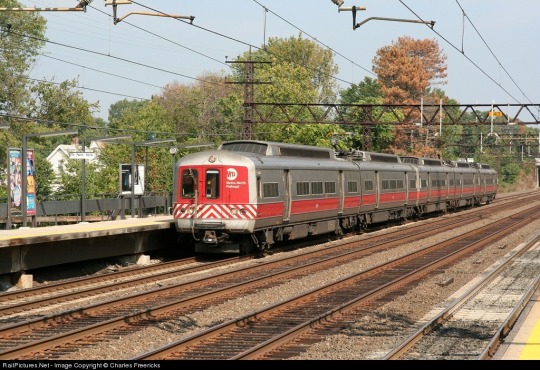
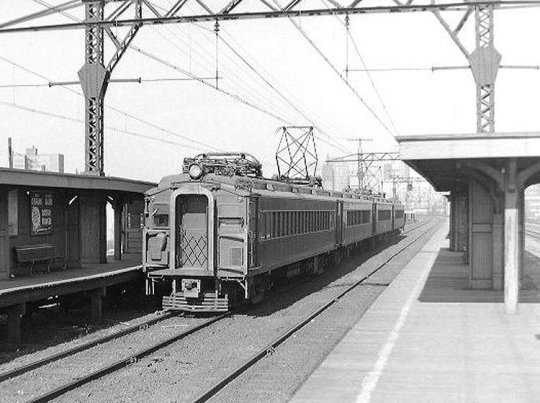


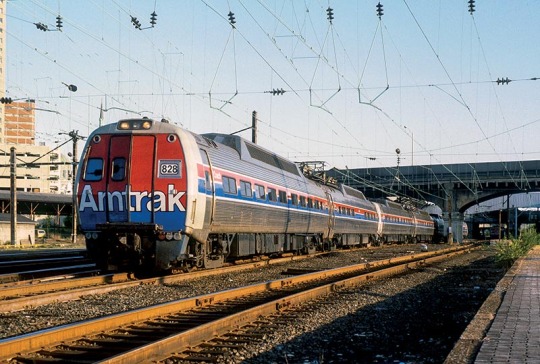
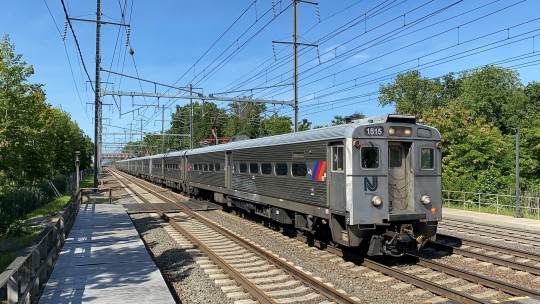
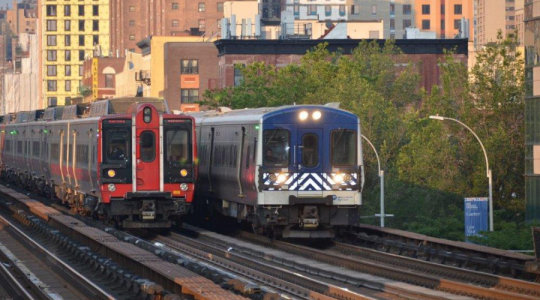
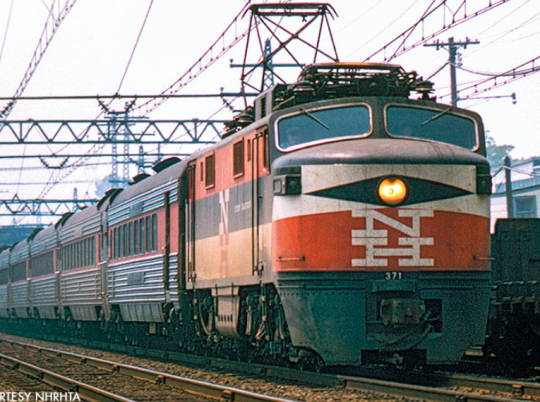
All of these (Except the K4) are Electric (although the K4 is running underwire) these all use either AC overhead power or DC third rail (and in the Case of several are Capable of switching between the Two)
Actually no wait the Illinois Central multiple units use 1500V DC overhead power not 12kV 25Hz AC like Pennsy and New Haven did


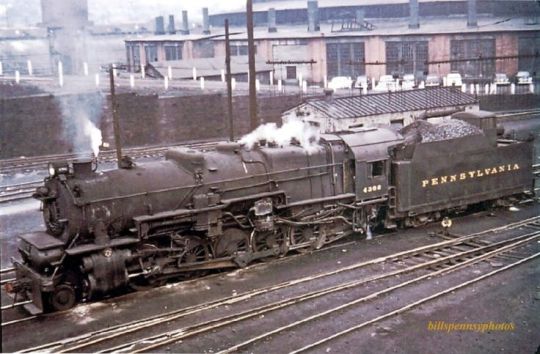

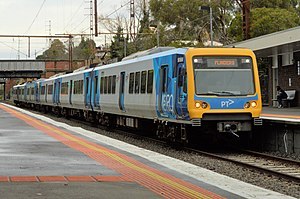
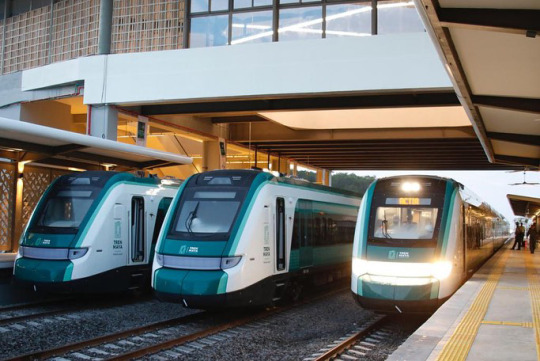
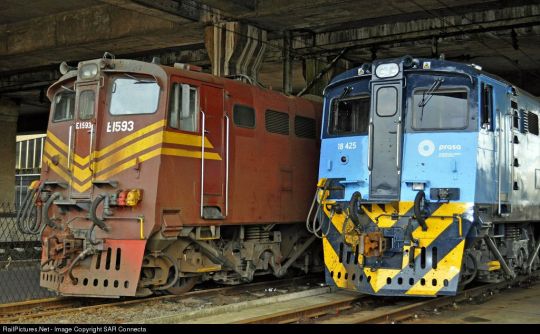
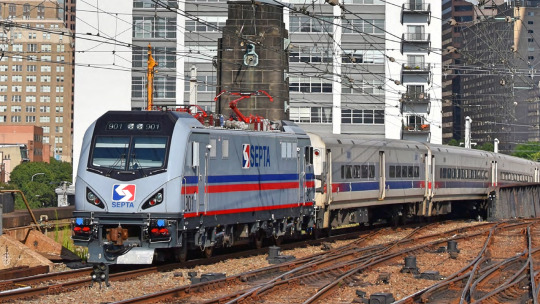
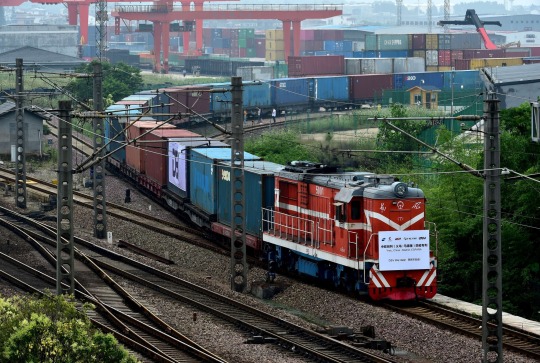

Train :3

#trainposting#amtrak#electric traction#septa regional rail#mta metro north#metro north railroad#new haven#new york central#pennsylvania railroad#metroliner#illinois central#nj transit#septa#commuter rail#electrified railroads#electrification#electric train#third rail#electricity#new york new haven and hartford
9 notes
·
View notes
Text
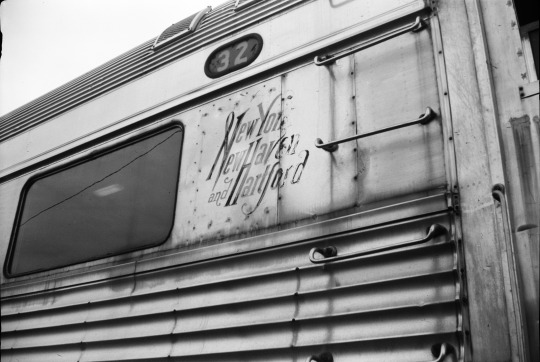
New York, New Haven, & Hartford Budd car at the Danbury Railway Museum. Photo taken by me on a 1920s No. 1 Pocket Kodak Junior.
#history#railroad#new york new haven & hartford#black and white photography#photography#trains#diesel#film#film photography#120 film#voca1ion
0 notes
Photo

Day 22: New Haven I-5
Info from Locomotive Wiki:
With the increase of passenger traffic on the New Haven's Shore Line requiring trains of fourteen to sixteen cars, the capacity of the I-4 Pacifics which had been used for twenty years was severely taxed. As a result of tests with two of these engines with a twelve-car train operating over the 156.8 miles between New Haven and Boston, this new design was worked out. Much research went into these studies, which included consideration of the 0.6 to 0.7 per cent ruling grade near Sharon Heights outside of Boston, and the eventual plans called for a locomotive which could maintain a 60-mile speed over these grades with a twelve-car 830-ton train.
Ten of these Class I-5 engines were delivered in 1937, being partly streamlined but with maintenance accessibility in mind. They have been satisfactory in every respect since they went into service and will probably remain the last steam locomotives to be purchased by the New York, New Haven, And Hartford Railroad.
The first of the class, #1400, was built by the Baldwin Locomotive Works in 1937. The last ones were withdrawn in 1951 with a life of only 14 years - a considerable waste of resources. Had they survived a few years longer, they would have undoubtedly became candidates for preservation.
models and route by: Pweiser, Auran, and Download Station
#New York New Haven & Hartford Railroad#New Haven#New Haven Railroad#NH#New Haven I-5#NH I-5#I-5#Steam Locomotive#Trains#Trainz Simulator#Christmas#Advent Calendar#Christmas 2022 🎄🎅🎁
0 notes
Text

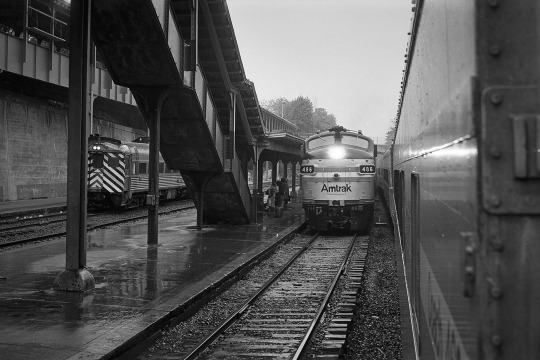
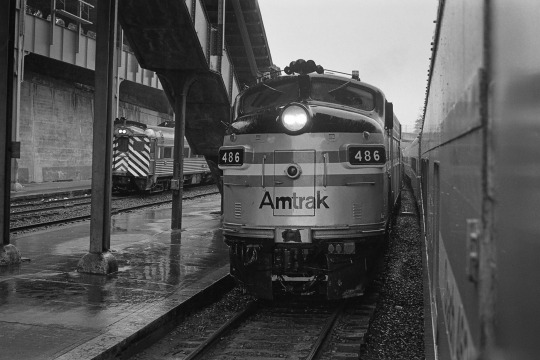
Changing Power at Poughkeepsie While headed to NYC on the Lake Shore Limited, the train stopped at Poughkeepsie, New York, to change power; the rail line here was formerly the New York Central. Unfortunately, I don’t know what was on point of the train from Rochester (where I got on) to this spot, but from here on in to Grand Central Terminal, it would be an EMD FL9. This locomotive, truly a unique model, was designed for use on the New York, New Haven and Hartford Railroad, specifically with GCT in mind. The locomotive could run as a normal diesel-electric does, but also use the electricity of a third-rail (either over or under the shoe) so as to not spew exhaust in the tunnels under Park Avenue as well as in the station itself. There were sixty of these produced; they remarkable for their B-A1A wheel configuration. After the New Haven was folded into the Penn Central, the use of this engine type expanded to the Hudson Valley line, as we see here. Besides what was happening with my train, there is a Rail Diesel Car in the station; RDCs were built by the Budd Company of Philadelphia between 1949 and 1962. I believe these interesting self-propelled units were used for local service on the various Conrail commuter lines north of NYC; Metro North would take over these lines in 1983. Three images by Richard Koenig; taken in May of 1981.
#metronorthrailroad#metronorth#amtrak#poughkeepsienewyork#poughkeepsieny#poughkeepsie#lakeshorelimited#filmphotography#grainisgood#rdc#fl9#hudsonvalley#hudsonriverline#newyorkcentral
45 notes
·
View notes
Text

Still fully dressed for the NYC, this Penn Central pair of Rail Diesel Cars will shortly depart for Harmon rolling south along the Hudson River on this cloudy day. In the background the New York New Haven and Hartford's soaring bridge over the Hudson still sees daily freights but the wooden deck will burn on 05-08-1974 stopping all freight traffic forever. Poughkeepsie, NY May 10, 1968
#commuter train#pc#penn central#nyc#new york central#1968#new york city#trains#passenger train#freight train#history#poughkeepsie#new york
10 notes
·
View notes
Text

#VoxPop The long-running radio program Vox Pop often focused on the American railroad and railroad workers.
On September 21, 1942, the program highlighted the New York, New Haven, and Hartford Railroad in a broadcast from the Cedar Hill Yard in New Haven, Connecticut. Here, interviewee Benjamin T. Savory shows host Parks Johnson the controls of a steam locomotive. Savory joined the New Haven Railroad in 1903. He retired in 1949 after a 50-year career in railroading. He passed away in Manchester, Connecticut, in 1954 at the age of 73.
Source: Parks Johnson collection on Vox Pop
11 notes
·
View notes